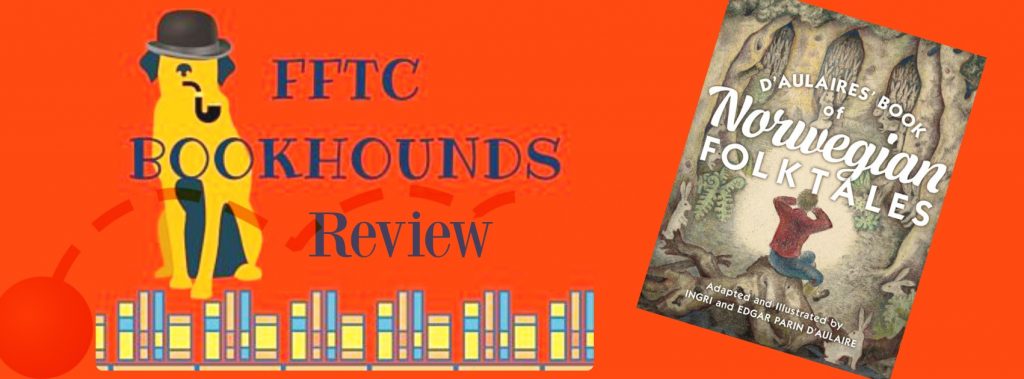My six-year-old and I have been reading D’aulaires Book of Norwegian Folktales for our bedtime stories for the last several weeks. While it was a bit difficult to start, we’ve really started to enjoy this book.
This was a challenging book to start. The first week, I would start to nod off while reading out loud. My kids would start fighting or wander off; and I’d be reading to myself. We set the book aside and picked up other books for awhile. I tried to do some research, but there isn’t much out there about Norwegian Folktales. There were certainly no study guides.
However, I came back into it with just my six-year-old and we started to really enjoy the stories. Sometimes the other kids sit down and listen, too, but they are not allowed to be disruptive; and I gear my reading time directly to the attention span of the first grader.
Folktales and fairy tales are nice read aloud stories, because they are short. They can be resolved in one (two if your having a squirmy day) sitting. Then if you want, you can set the book aside while life moves on — maybe start and finish another book — and come back without the need to play catch up.
Interesting Things to Watch for in D’aulaires Book of Norwegian Folktales
Folktales and fairy tales are also a great place to practice reading comprehension. It doesn’t have to be done at book club level, but they lead themselves to discussion and observation. Here are some things we noticed as we read this book.
- Everything happens in three. If the protagonist finds a silver horse one day, the next day he’ll find a bronze horse, and the third day he’ll find a golden horse. At first, as an adult, I was expecting the third time to have a plot twist. It’s more of a building. I hadn’t noticed this before, but then I started to notice this storytelling technique everywhere in children’s literature. It’s actually done so often, it has a name, “The Rule of Three”. If you are reading with older kids, this is a tool you can point out that they can use when writing their own stories.
- You’ll see echos of more familiar fairy tales. One story is basically the story of Puss in Boots, but the cat turns out to be a Princess who has been cursed by an Ogre. This naturally leads to child-started discussion, that can be expanded on with leading questions. “Which story do you think came first?” “Which do you like better? Why?”
- The morals are a little less Disney and a little more Godfather. Espen Cinderlad, the protagonist of many of these stories, is unassuming, he keeps his head down, and he waits for his opportunity. His mother despises him and his older brothers mock and ridicule him. While he tends to be naturally open and giving, the outcome for those who cross him can be nasty. This can, of course, bring up good talking points about traditional folktale values versus our culture’s values.
- Physical punishment happens. Kings execute potential suitors who don’t measure up. Benefactors beat disobedient children. You may want to stop at points and just say, “Does this sound right to you?”
Age Recommendations
Our culture tends to gear fairy tales toward preschool and early grade school. In order to make that appropriate, we revise them significantly — think Super Why. The stories in this book are not revisionist tales. While I’m reading them with a first grader, I know that quite a bit goes over his head. I think the ideal age for these stories is middle grade to early middle school. This is when they can start to understand the lessons and see differences between the storybook culture and our own values. This is also, I think, the best age for children to use the folk tales to help strengthen their own writing, besides the Rule of Three, there are other Elements of Fairy Tales they can watch for and then incorporate into their own writing. If you have a middle grade child who struggles with creative writing, they may find a study of these folk tales and other fairy tales to be a helpful boost.
FFTC received a copy of this book to facilitate our review. All opinions are our own. The link to the above is an Amazon affiliate link. We theoretically receive money from Amazon for sales of this product.

